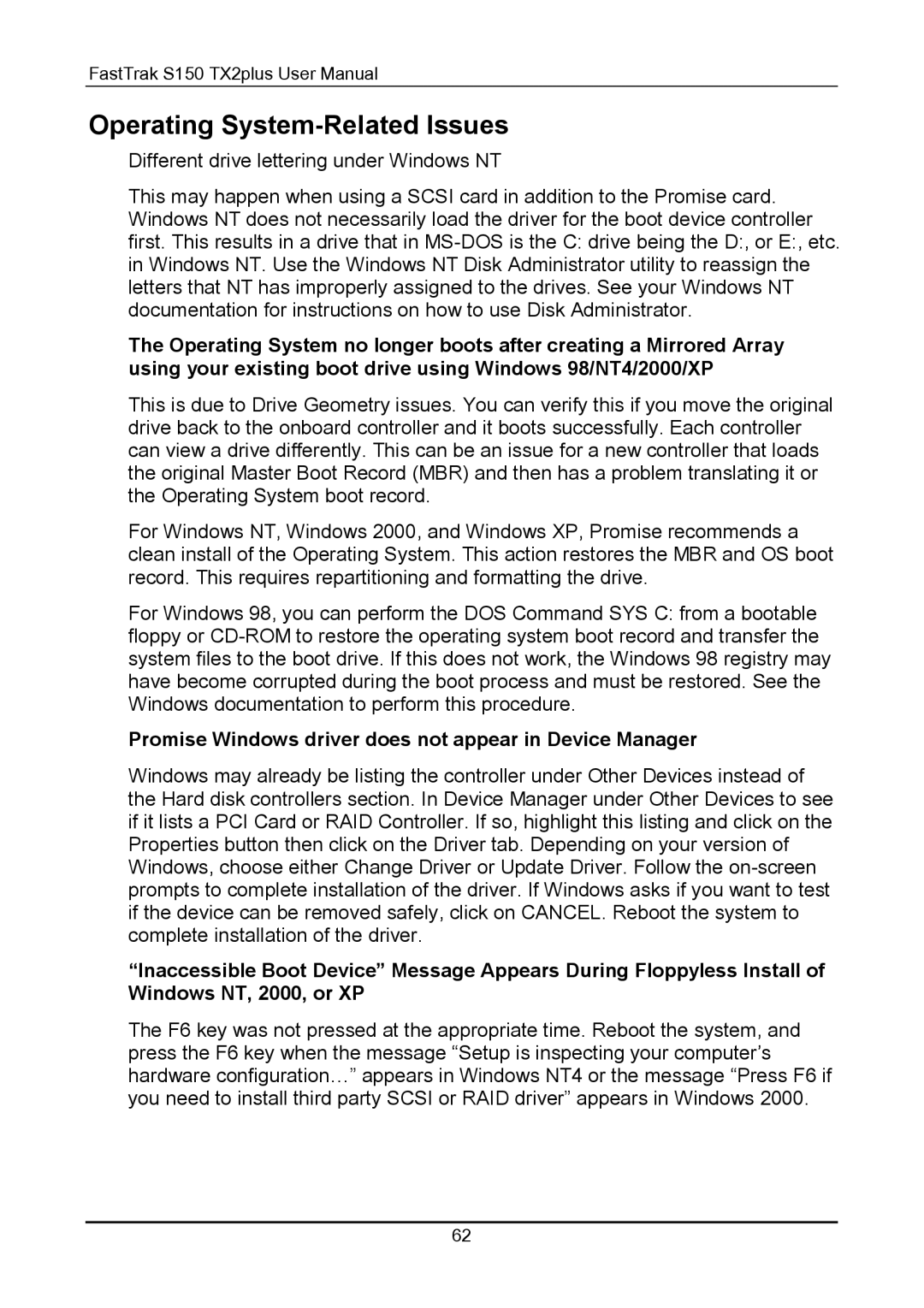
FastTrak S150 TX2plus User Manual
Operating System-Related Issues
Different drive lettering under Windows NT
This may happen when using a SCSI card in addition to the Promise card. Windows NT does not necessarily load the driver for the boot device controller first. This results in a drive that in
The Operating System no longer boots after creating a Mirrored Array using your existing boot drive using Windows 98/NT4/2000/XP
This is due to Drive Geometry issues. You can verify this if you move the original drive back to the onboard controller and it boots successfully. Each controller can view a drive differently. This can be an issue for a new controller that loads the original Master Boot Record (MBR) and then has a problem translating it or the Operating System boot record.
For Windows NT, Windows 2000, and Windows XP, Promise recommends a clean install of the Operating System. This action restores the MBR and OS boot record. This requires repartitioning and formatting the drive.
For Windows 98, you can perform the DOS Command SYS C: from a bootable floppy or
Promise Windows driver does not appear in Device Manager
Windows may already be listing the controller under Other Devices instead of the Hard disk controllers section. In Device Manager under Other Devices to see if it lists a PCI Card or RAID Controller. If so, highlight this listing and click on the Properties button then click on the Driver tab. Depending on your version of Windows, choose either Change Driver or Update Driver. Follow the
“Inaccessible Boot Device” Message Appears During Floppyless Install of Windows NT, 2000, or XP
The F6 key was not pressed at the appropriate time. Reboot the system, and press the F6 key when the message “Setup is inspecting your computer’s hardware configuration…” appears in Windows NT4 or the message “Press F6 if you need to install third party SCSI or RAID driver” appears in Windows 2000.
62
